Walls
The most budgetary way to arrange a bathroom is plastic panels... It is easy to cope with their installation, while the elements can be laid in any direction: those located vertically optically raise the ceiling, making the room higher, and horizontally expand the space.
The panels are not afraid of moisture and do not deform due to temperature changes. The walls do not need to be leveled before installation: the material will hide all the imperfections. Panels can imitate lining, tiles, have a wood texture or glossy shine.
An excellent solution for small bathrooms - seamless white elements: they visually increase the space, and the absence of patterns and patterns makes the interior more stylish.
To decorate the bathroom in a more non-standard way, you should choose moisture resistant wallpaper... They will cost less than tiles, and most beginners will cope with gluing. The choice of wallpaper designs is very rich, and it is not difficult to replace them if necessary. Suitable for a bathroom:
- Washable vinyl wallpaper.
- Moisture resistant liquid.
- Embossed fiberglass canvases that can be dyed.
Wallpaper can be used to decorate an accent wall or the upper part of the wall, where moisture does not get. For additional protection, the dense can be varnished. Do not glue them in wet areas: on the inner surface of the shower stall and on the walls near the bathtub.
To save money on bathroom decoration, designers often use moisture resistant paint. The color gamut of such a solution is much wider than that of tiles, besides, you can easily change the color of the walls.
Before the first application of the composition, the surface of the walls must be removed from the old finish, treated with an antiseptic, leveled and primed.
To make the bathroom look more interesting, you can use different shades of colors. Acrylic, silicone and latex compounds are suitable.
Another budget, durable and environmentally friendly material for interior wall decoration in the bathroom - decorative plaster... It hides all small cracks well, is easy to apply and looks impressive. In addition, the plaster absorbs moisture, but protects the walls from pathogenic microflora. Before application, the surface should be waterproofed, leveled and primed.
The cheapest mixture is mineral, it has low plasticity. Acrylic is slightly more expensive, but more elastic and durable. The most durable and high quality decorative plaster is silicone, but its price is above average.
Bathroom cladding timber - an expensive process, since only elite wood species (oak, ash, Brazilian beech) can withstand long exposure to moisture. In dry areas, the use of natural material is permissible, but requires careful treatment with stain and varnish.
If you like the industrial style, choose a thin-walled cladding for your bathroom. brick or brick tiles (also called veneers), which are ready for contact with water.
Floor
For tiling the bathroom floor, there are several optimal options besides tiles. One of them - self-leveling polyurethane floor... It is resistant to moisture and has no joints. To create a unique design, you can choose any pattern.Before pouring the floor, carefully prepare the base.
For imitation of wood in the bathroom, it is suitable moisture resistant laminate increased strength, impregnated with wax, which will protect the floor from the accumulation of mold. The surface must be wiped immediately after water ingress. Waterproof laminate does not absorb moisture and is more durable.
Wooden floor - more expensive material, but has a pleasant texture and environmental friendliness. Teak, larch, oak and decking are suitable. The floor must be leveled, waterproofed and primed before laying. The parts are glued to the base with polyurethane glue, which serves as a sealant.
It is important that the boards are impregnated with compounds that increase water resistance (oil, stain, varnish). If installed and processed incorrectly, the tree may deform.
Linoleum - material for the bathroom, which, with proper installation, will last about 15 years. Choose a commercial type of linoleum with an anti-slip surface. The texture of the coating can imitate wood or stone. The material must be laid on a flat floor and the seams must be carefully sealed.
Ceiling
The most budgetary, but at the same time, the most short-lived way to decorate the ceiling in the bathroom is water-based paint... The emulsion for facade work, resistant to fumes and temperature extremes, will last the longest. Before painting, the surface is putty, sanded and covered with primer.
The ceiling can be made hinged - this will require a moisture resistantdrywall and a frame made of a metal profile. The advantage of this design is that it does not require preliminary leveling of the surface, although for finishing it is necessary to putty joints. Luminaires can be built into the suspended ceiling.
Plastic panels and aluminum slats refer to a more budgetary way of finishing the ceiling in the bathroom. They also require a frame. PVC panels and aluminum slats are water resistant and easy to maintain.
Another modern and practical option for lining the ceiling is a vinyl-based canvas. Stretch ceiling they are quickly mounted, look laconic, have a varied design and degree of gloss, as well as the ability to build in lamps. The canvas can withstand up to 100 liters of water in case of a flood from the neighbors upstairs.
For those who wish to decorate the ceiling tree, it is worth choosing boards made of spruce, teak, cedar or alder no thicker than 25 mm, impregnated with water-repellent compounds. A more competent choice for a bathroom would be a suspended ceiling, which will provide ventilation for the material.
A bathroom or a bathroom, fully tiled, deprives the room of comfort. The listed finishing methods will not only help to save the budget, but also bring originality and completeness to the interior.

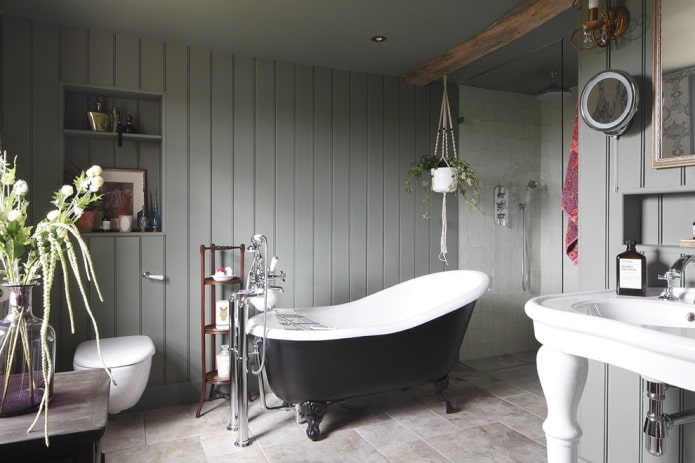
 10 practical tips for arranging a small kitchen in the country
10 practical tips for arranging a small kitchen in the country
 12 simple ideas for a small garden that will make it visually spacious
12 simple ideas for a small garden that will make it visually spacious
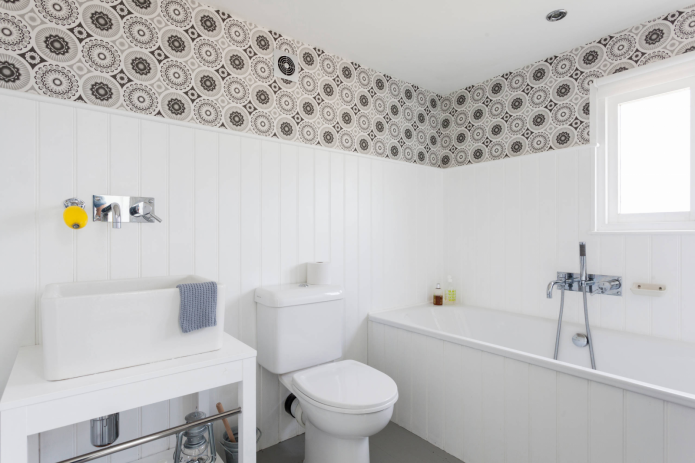
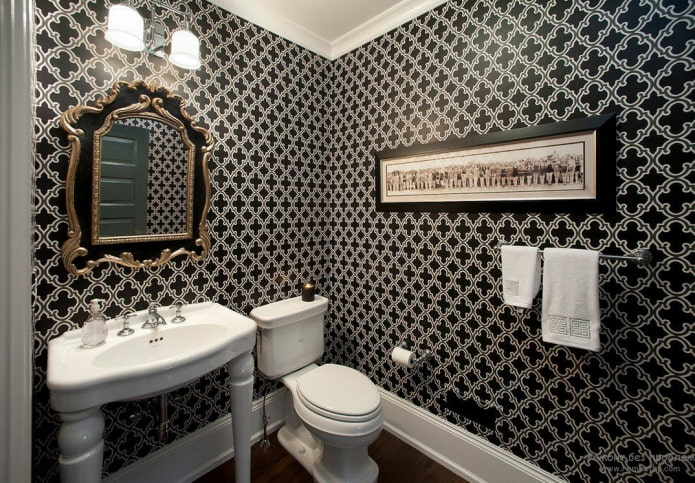
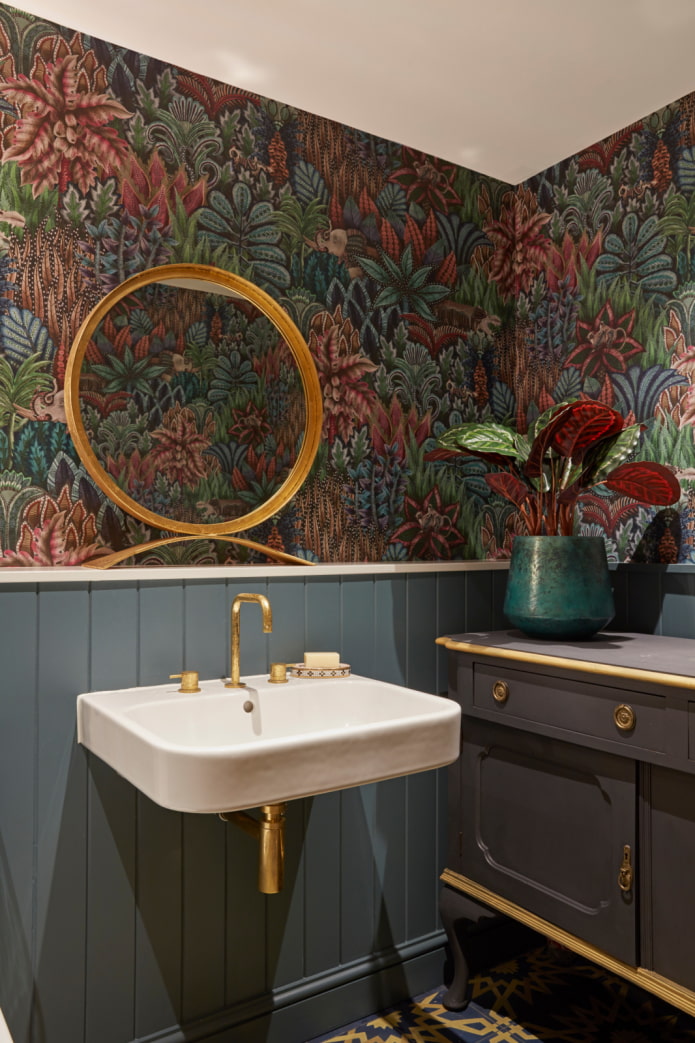
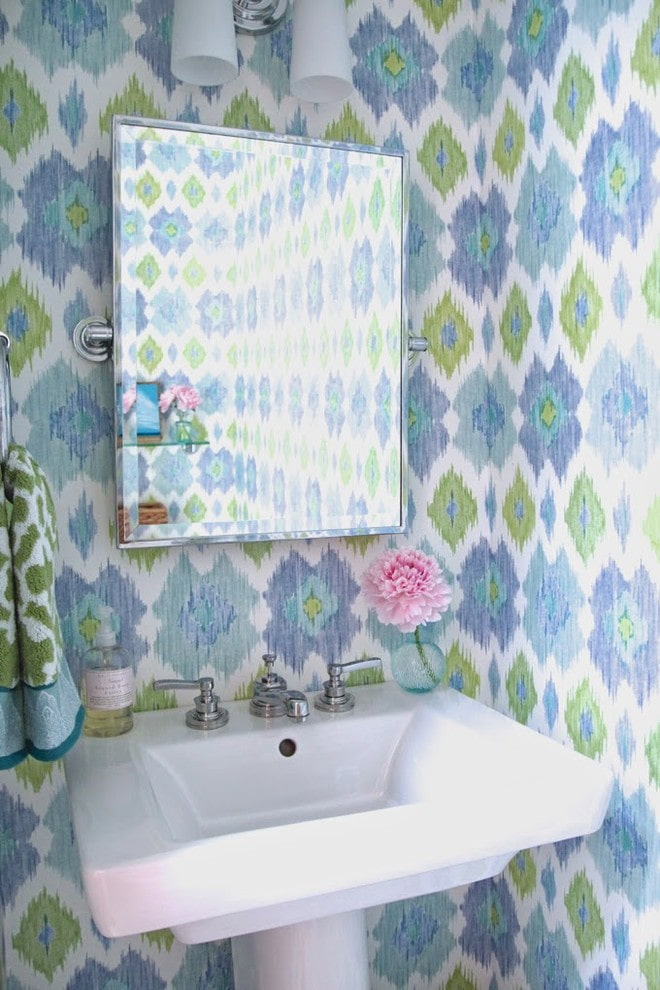

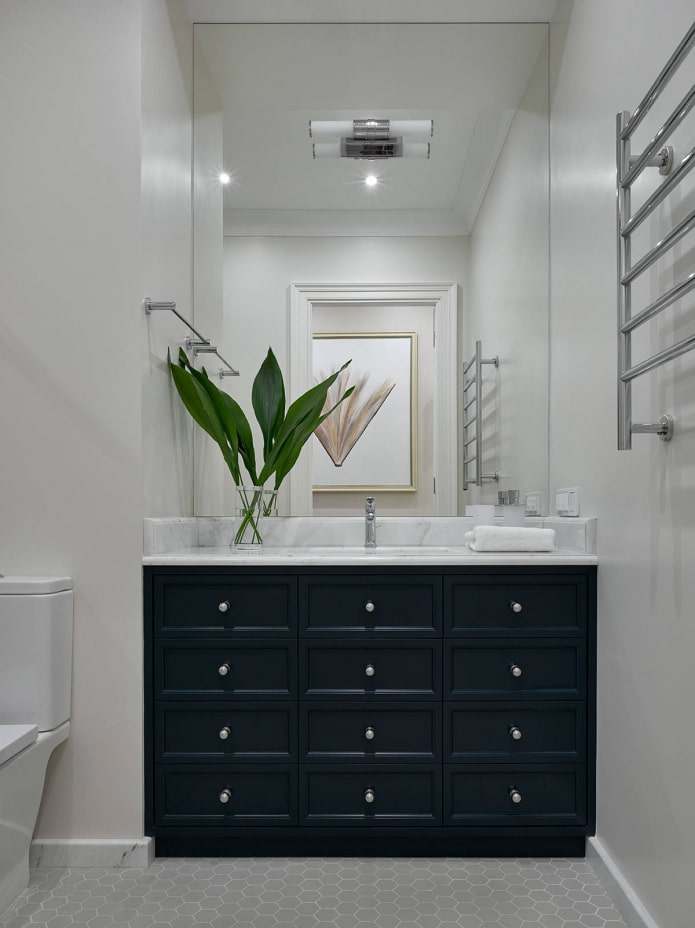
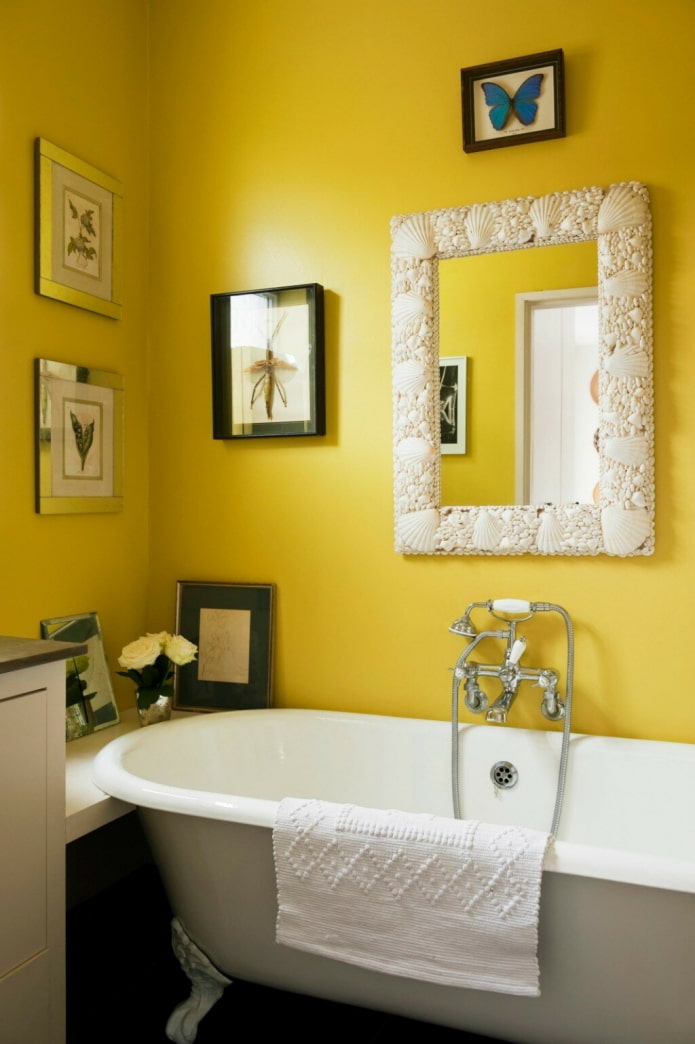
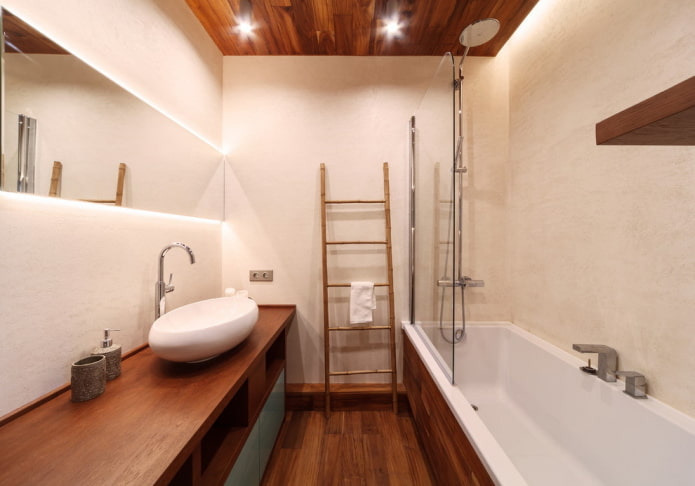

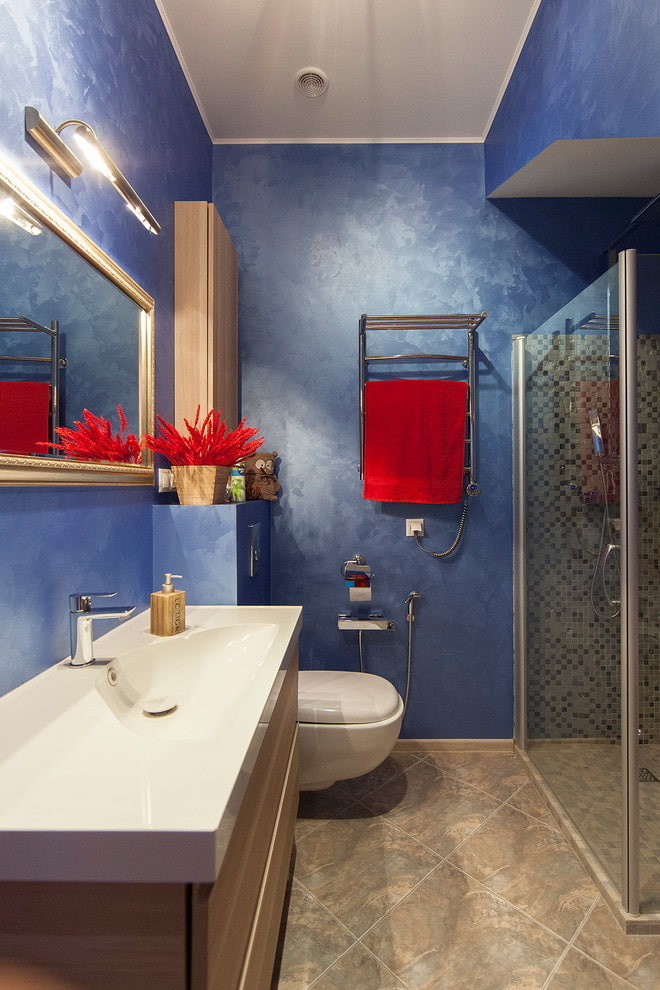
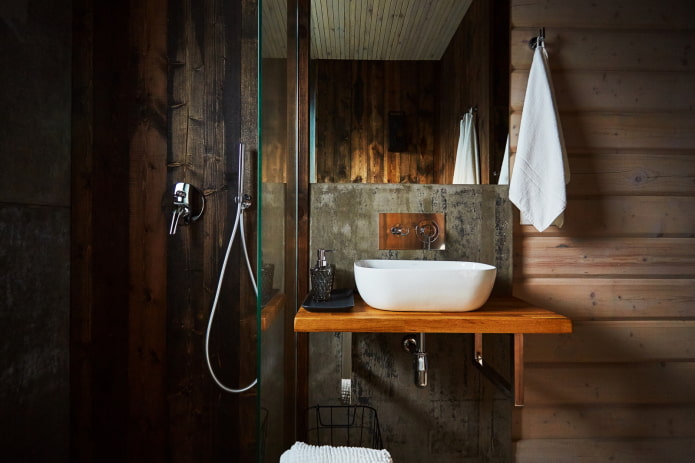

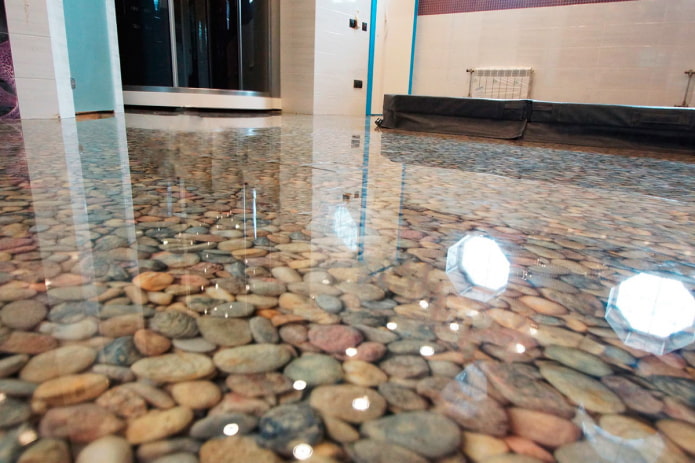
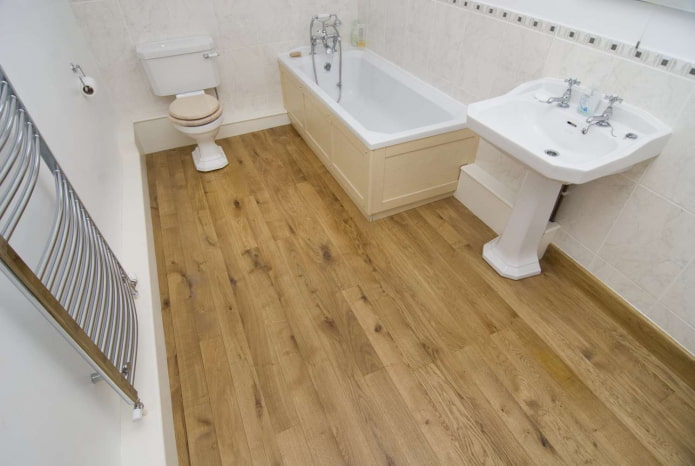
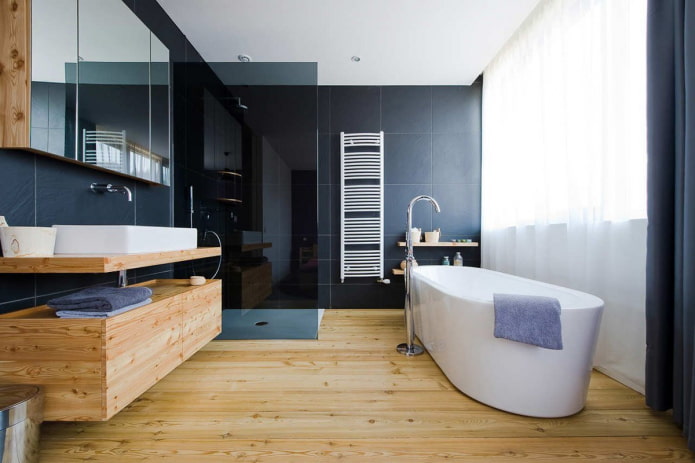

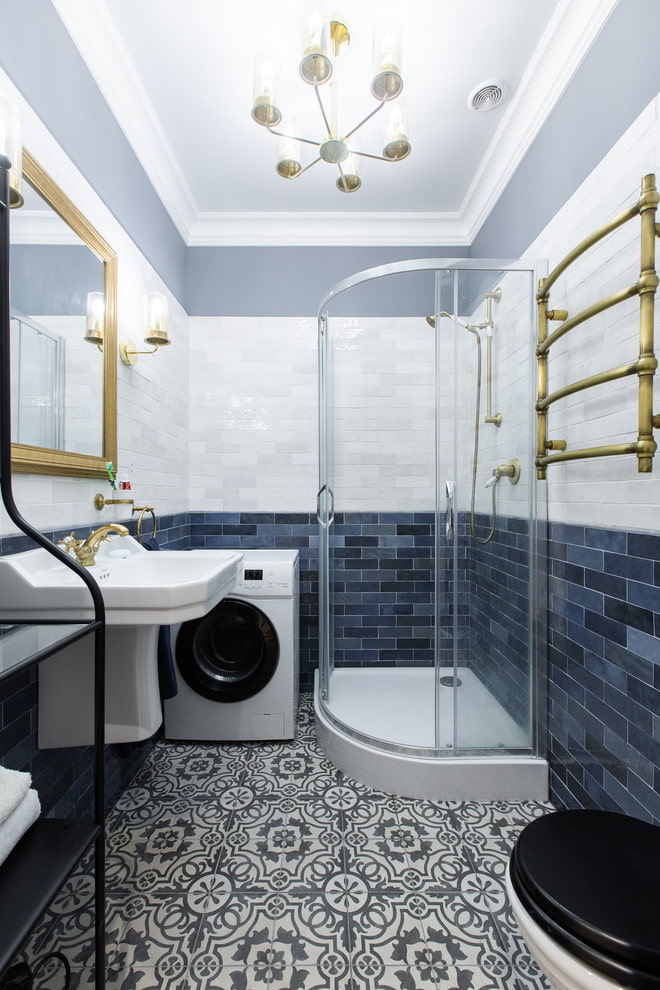

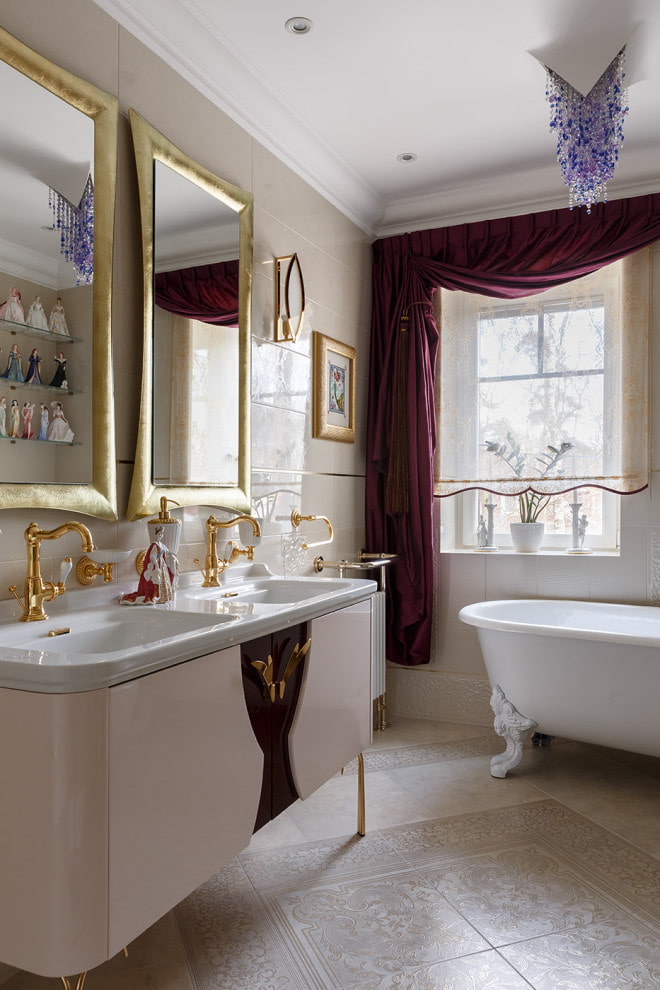
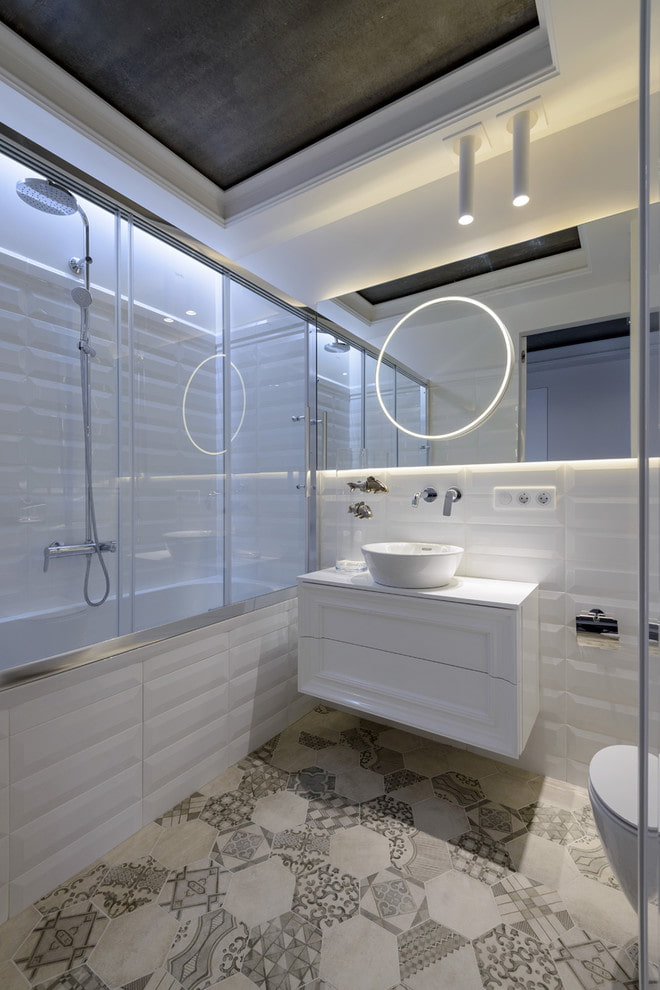
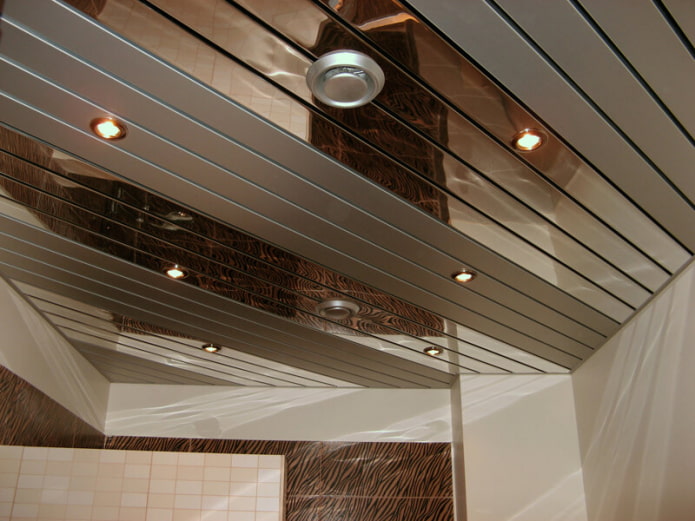
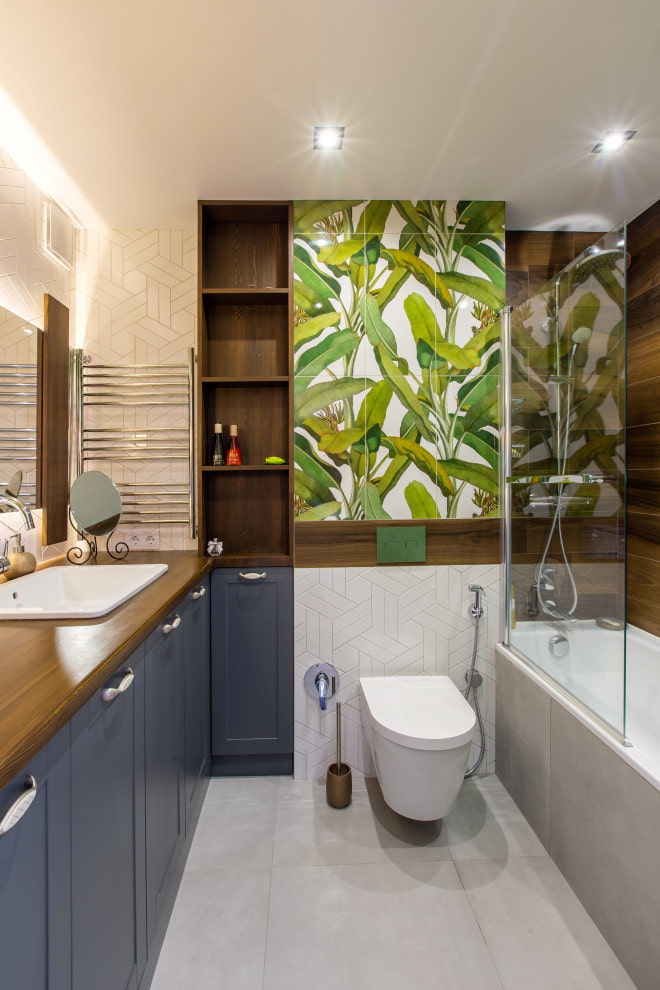
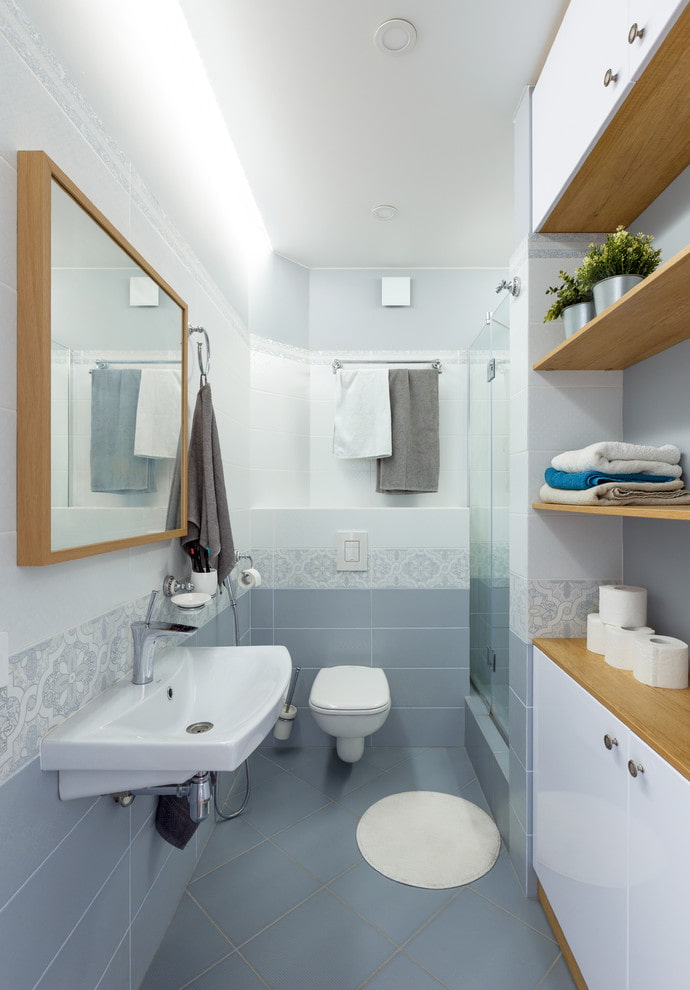

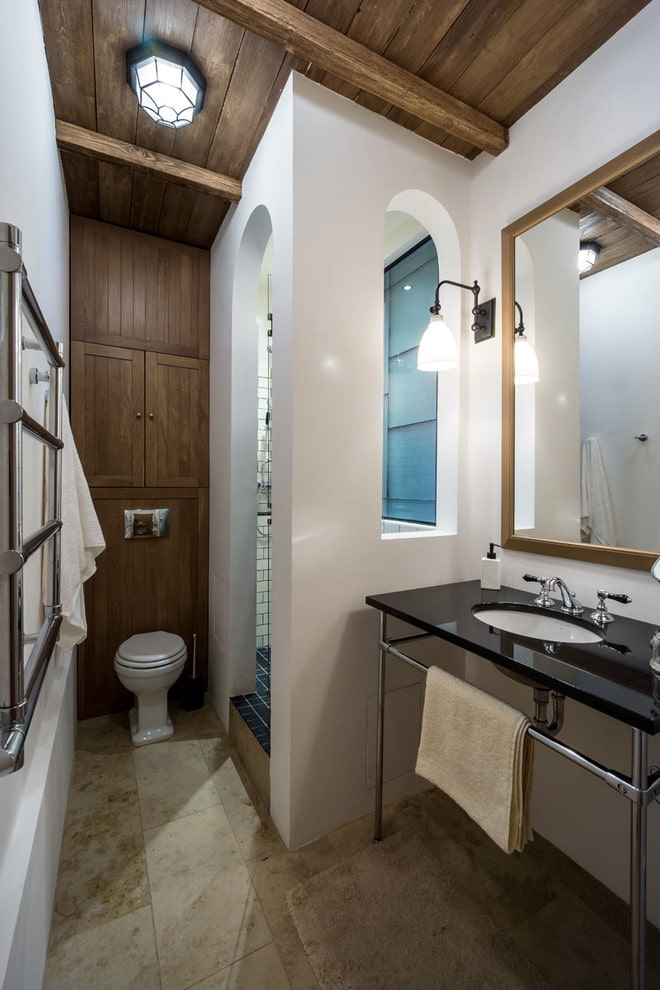

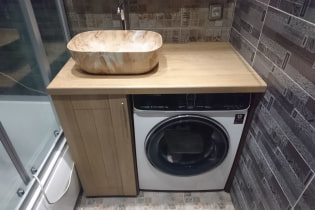 How to position the washing machine in a small bathroom?
How to position the washing machine in a small bathroom?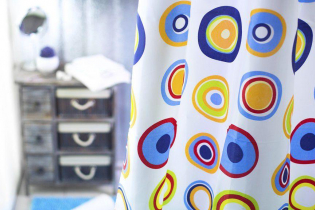 How to remove plaque from the bathroom curtain?
How to remove plaque from the bathroom curtain?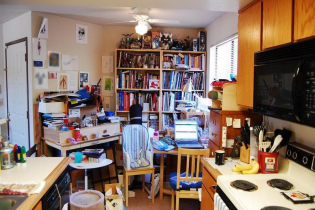 7 common mistakes in small apartment renovation that eat up all the space
7 common mistakes in small apartment renovation that eat up all the space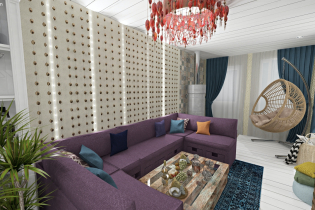 Apartment layout: how not to be mistaken?
Apartment layout: how not to be mistaken?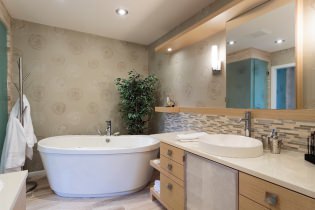 Wallpaper for the bathroom: pros and cons, types, design, 70 photos in the interior
Wallpaper for the bathroom: pros and cons, types, design, 70 photos in the interior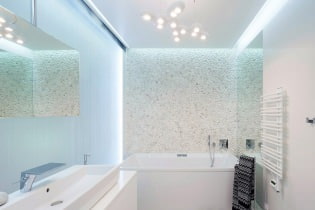 Modern bathroom interior: 60 best photos and design ideas
Modern bathroom interior: 60 best photos and design ideas